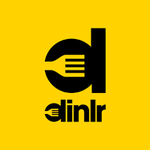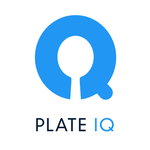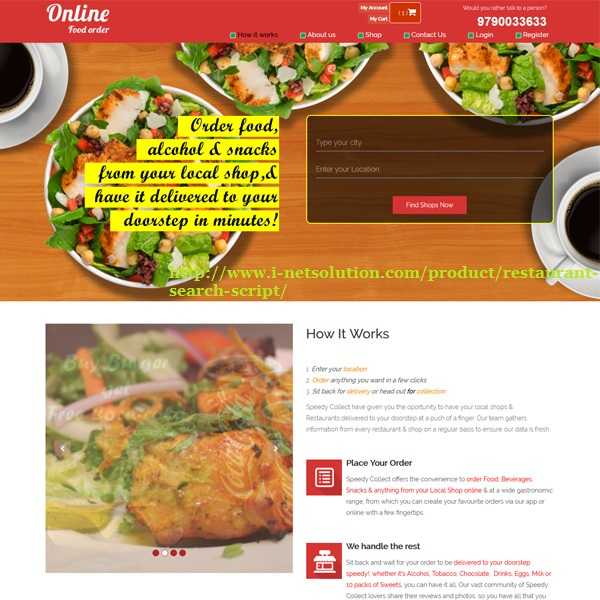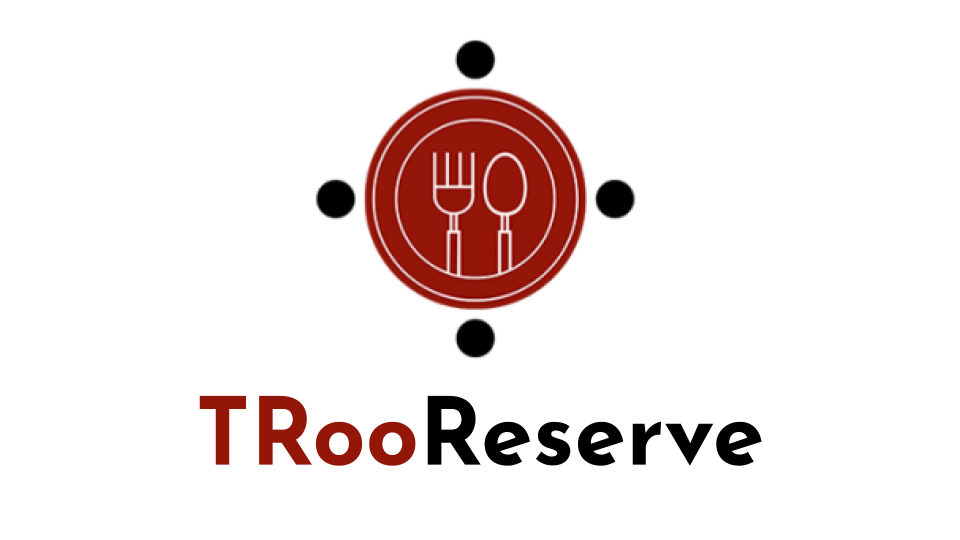Description

Dinlr Waiter

Plate IQ
Comprehensive Overview: Dinlr Waiter vs Plate IQ
Dinlr Waiter and Plate IQ are both software solutions designed to enhance operational efficiency within the food and restaurant industry. However, they serve different facets of the industry and have distinct functionalities, target markets, and differentiating features.
a) Primary Functions and Target Markets
Dinlr Waiter:
-
Primary Functions:
- Dinlr Waiter is a point-of-sale (POS) system and restaurant management solution. It offers features designed to streamline operations, such as order taking, table management, bill splitting, and integration with kitchen display systems.
- The software is built to improve the efficiency of waitstaff by allowing them to manage orders directly through mobile devices or tablets.
- Provides analytics and reporting to help restaurant managers make informed decisions.
-
Target Markets:
- The primary market for Dinlr Waiter includes small to medium-sized restaurants, cafes, and other dining establishments. It appeals to businesses looking for efficient and modern POS solutions that can enhance customer service and operational workflow.
Plate IQ:
-
Primary Functions:
- Plate IQ focuses on automating accounts payable (AP) processes. The software helps restaurants digitize their invoices, automate data entry, and streamline vendor payments.
- It offers features like invoice scanning with OCR technology, quick access to spending analytics, and integration with accounting systems for seamless financial management.
- Aims to reduce human error and enhance the efficiency of financial operations in restaurant management.
-
Target Markets:
- Targets larger restaurant chains, hospitality businesses, and food service operators that handle a high volume of invoices and require more robust financial management solutions.
- Particularly valuable for finance departments within these organizations looking to optimize their expenses and accounting practices.
b) Market Share and User Base
-
Dinlr Waiter:
- Dinlr Waiter is relatively niche compared to some larger POS service providers. The market share is primarily within Southeast Asia, focusing on markets that are rapidly adopting digital POS solutions in restaurants.
- The user base consists mainly of independent and smaller regional restaurant chains, making it well-suited for localized markets.
-
Plate IQ:
- Plate IQ has carved out a substantial presence within the U.S., having formed partnerships with several notable restaurant groups and chains. Its market share is stronger in the financial management segment of the food service industry.
- The user base includes more prominent restaurant chains and hospitality groups focused on streamlining their accounts payable processes, giving Plate IQ robust traction in its niche.
c) Key Differentiating Factors
-
Dinlr Waiter:
- Ease of Use: Dinlr Waiter is designed to be intuitive for restaurant staff, minimizing training time and allowing quick adoption.
- Integration Focus: Primarily integrates with other front-of-house systems to provide a seamless customer service experience.
- Device Flexibility: Can be deployed on a variety of mobile devices, making it cost-effective for smaller establishments.
-
Plate IQ:
- Financial Automation: Excels in automating the AP process, offering a highly specialized solution for managing restaurant finances.
- Advanced Reporting: Provides comprehensive insights into vendor spending and budgeting, which is crucial for financial departments.
- Scalability and Customization: Capable of handling high volumes of invoices and offering customized workflows suited for large operations.
In summary, Dinlr Waiter and Plate IQ serve different purposes within the restaurant industry. Dinlr Waiter is geared towards improving front-of-house operations, targeting smaller to mid-sized restaurants that need efficient and flexible POS solutions. Plate IQ focuses on back-of-house financial management, catering to larger restaurant chains seeking to streamline their accounting and payable function, with strong emphasis on automation and financial insights.
Contact Info

Year founded :
Not Available
Not Available
Not Available
Not Available
Not Available

Year founded :
2014
Not Available
Not Available
United States
http://www.linkedin.com/company/plate-iq
Feature Similarity Breakdown: Dinlr Waiter, Plate IQ
Dinlr Waiter and Plate IQ serve different purposes within the restaurant and hospitality industry, yet they share some overlapping features due to their focus on operational efficiency. Here's a breakdown of their similarities and differences based on their features, user interfaces, and unique functionalities:
a) Core Features in Common
-
Cloud-Based Solutions: Both Dinlr Waiter and Plate IQ are cloud-based, enabling easy access and updates across devices without requiring local data storage.
-
Integration Capabilities: They are designed to integrate with other systems commonly used in the restaurant industry, such as POS systems, accounting software, and inventory management tools.
-
Reporting and Analytics: Each offers analytics to help business owners make informed decisions. This includes performance metrics, inventory usage, and financial reporting.
-
User Management: Both platforms allow for user management, including different levels of access and permissions, to ensure that staff only sees relevant information.
b) Comparison of User Interfaces
-
Dinlr Waiter: The interface is optimized for usability in a fast-paced restaurant environment. It’s designed to be intuitive, with quick access to table management, order taking, and payment processing. The focus is on minimizing the time spent on each task to maximize service efficiency.
-
Plate IQ: This platform prioritizes invoice processing and accounts payable management. The interface is straightforward, emphasizing easy upload and categorization of invoices. The user experience is tailored more towards office or back-of-house staff rather than frontline restaurant service workers.
c) Unique Features
-
Dinlr Waiter:
- Order Management: A key feature is the seamless order-taking functionality, including customizable menus and real-time order updates that are sent directly to the kitchen.
- Table Management: It includes features for managing table reservations and layouts, helping staff to optimize seating and track table turnover.
- Integrated Payment Processing: Dinlr offers integrated payment solutions, allowing waitstaff to process payments directly through the app.
-
Plate IQ:
- Automated Invoice Processing: Plate IQ shines with its ability to automate invoice data entry and approval workflows, reducing manual paperwork and errors.
- Cost Tracking and Analysis: It provides robust tools for tracking costs over time, offering deep insights into spending trends and helping with budgeting.
- Vendor Management: There are comprehensive features for managing and communicating with vendors, including the ability to manage contracts and pricing agreements.
In summary, while Dinlr Waiter and Plate IQ share some operational efficiency features, their unique features cater to different parts of a restaurant's operations. Dinlr Waiter is more focused on the front-of-house and service aspects, while Plate IQ is specialized in back-office tasks like invoice processing and financial management.
Features

Menu Management
Customer Experience
Order Processing
Billing and Payments

User-Friendly Interface
Payment Management
Expense Tracking
Invoice Processing and Automation
Integration with Accounting Software
Best Fit Use Cases: Dinlr Waiter, Plate IQ
Dinlr Waiter and Plate IQ are both specialized solutions catering to specific needs within the restaurant and hospitality industry, but they serve distinct functions and their best fit use cases reflect this.
Dinlr Waiter
a) Best Fit Use Cases for Dinlr Waiter:
-
Types of Businesses or Projects:
- Restaurants and Cafés: Dinlr Waiter is ideal for full-service restaurants and cafés that require an efficient order-taking and management system. It streamlines operations by allowing waitstaff to take orders digitally at the table, sending them directly to the kitchen.
- Bars and Clubs: Establishments with high customer turnover can benefit from quick and accurate order processing, minimizing errors and improving customer experience.
- Hospitality Venues: Hotels with in-house dining options can utilize Dinlr Waiter for room service orders or restaurant operations, enhancing guest satisfaction and operational efficiency.
-
Key Features:
- Table-side ordering and payment integration
- Real-time updates and communication with kitchen staff
- Customizable menu displays
Plate IQ
b) Preferred Scenarios for Plate IQ:
-
Types of Businesses or Projects:
- Large and Medium-sized Restaurants: Plate IQ is best suited for businesses that require streamlined accounts payable processes and invoice management. These restaurants often handle large volumes of transactions and invoices, which Plate IQ can help automate.
- Restaurant Chains and Franchises: Multi-location chains benefit from centralized invoice processing, cost tracking, and financial reporting to maintain consistency across locations.
- Caterers and Food Service Businesses: These businesses, which deal with significant procurement and inventory management, can leverage Plate IQ for cost control and operational efficiency.
-
Key Features:
- Automated invoice processing and data extraction
- Integration with accounting and inventory management systems
- Spend analytics and cost control capabilities
Differentiation by Industry Verticals and Company Sizes
d) How These Products Cater to Different Industry Verticals or Company Sizes:
-
Dinlr Waiter:
- Industry Verticals: Primarily targets the hospitality sector, specifically food and beverage services like restaurants, cafés, and bars.
- Company Sizes: More suited to small to medium-sized establishments that need straightforward and reliable point-of-sale solutions without the complexity of large-scale enterprise systems.
-
Plate IQ:
- Industry Verticals: Also targets the food service industry but focuses more on the back-office financial management aspect, making it valuable to any business in need of streamlined invoice processing.
- Company Sizes: Ideal for medium to large businesses, including restaurant chains, that require robust financial and transaction data management solutions. The software’s scalability also makes it a good fit for growing businesses that need more comprehensive financial oversight.
In summary, Dinlr Waiter excels in front-of-house operations to improve customer service, while Plate IQ focuses on optimizing back-office processes, such as accounting and inventory management, making each suited for different aspects of restaurant management.
Pricing

Pricing Not Available

Pricing Not Available
Metrics History
Metrics History
Comparing undefined across companies
Conclusion & Final Verdict: Dinlr Waiter vs Plate IQ
Conclusion and Final Verdict for Dinlr Waiter and Plate IQ
When comparing Dinlr Waiter and Plate IQ, both products serve distinct purposes and offer valuable features tailored to specific needs within the restaurant and hospitality industry. Dinlr Waiter is designed to streamline the ordering and serving process in restaurants, while Plate IQ specializes in automating accounts payable and invoice processing. Therefore, the best choice largely depends on the particular needs of a business.
a) Best Overall Value
Considering all factors, the best overall value is determined by your primary needs. If your main goal is to enhance customer service and improve table turnover rates, Dinlr Waiter may provide the best value by improving operational efficiency on the restaurant floor. Alternatively, if managing invoices, reducing paperwork, and improving financial accuracy are your priorities, Plate IQ may offer better overall value by streamlining back-office operations.
b) Pros and Cons
Dinlr Waiter:
Pros:
- Enhances customer experience by reducing wait times with efficient order taking.
- Integrates with various POS systems for seamless operations.
- User-friendly interface that can be easily adopted by staff members.
- May increase table turnover and sales through improved service speed.
Cons:
- Primarily focuses on front-of-house operations, offering limited benefits to back-office administrative tasks.
- Effectiveness heavily relies on staff training and adaptation to new technology.
Plate IQ:
Pros:
- Automates accounts payable and invoice processing, reducing manual data entry and errors.
- Improves financial insight through detailed analytics and reporting.
- Saves time and labor costs involved in invoice management.
- Offers integration capabilities with various accounting and inventory systems.
Cons:
- Does not address front-of-house operations or customer service.
- Implementation may require initial setup time and adjustment for the accounting team.
c) Recommendations for Users Trying to Decide
For users deciding between Dinlr Waiter and Plate IQ, consider the following recommendations:
-
Evaluate Your Primary Needs: If the main bottlenecks in your operations are related to customer service inefficiencies, Dinlr Waiter will likely be more beneficial. Conversely, if financial management and invoice processing are the source of challenges, Plate IQ is a more suitable choice.
-
Consider Integration and Compatibility: Evaluate how each product will integrate with your existing systems and workflows. A seamless integration can significantly impact the effectiveness of the implementation.
-
Assess Cost vs. Return on Investment: Consider the cost of each solution in relation to the expected benefits. While initial costs can be a consideration, the long-term efficiency gains should guide your decision.
-
Pilot and Training: Wherever possible, consider running a pilot program and invest in training staff to get the most out of the chosen solution. Employees well-versed in the system can maximize the benefits it offers.
Ultimately, the decision between Dinlr Waiter and Plate IQ should be based on which solution aligns better with your strategic goals and operational requirements. Each product offers specialized advantages that can cater to different aspects of restaurant management.
Add to compare
Add similar companies



